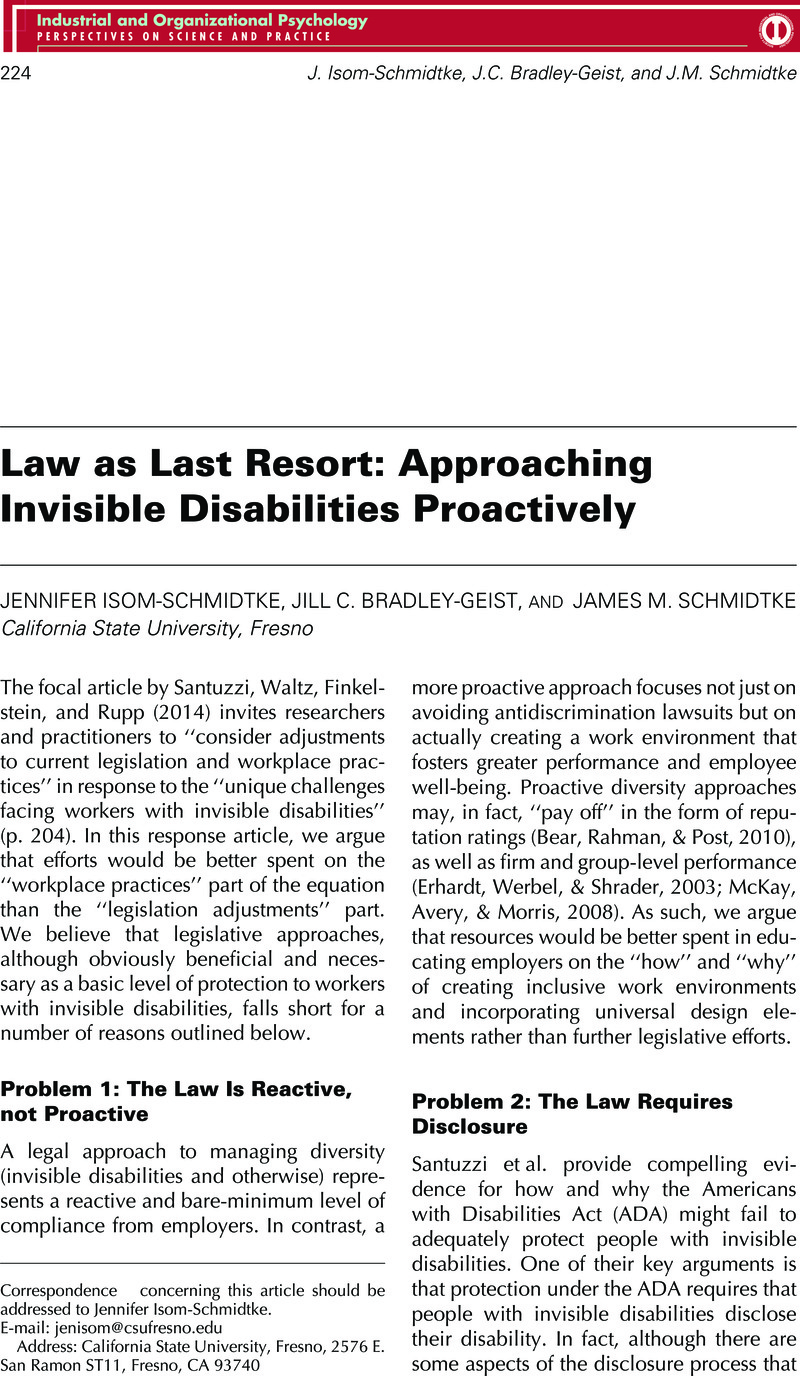Crossref Citations
This article has been cited by the following publications. This list is generated based on data provided by Crossref.
Santuzzi, Alecia M.
Keating, Robert T.
Martinez, Jesus J.
Finkelstein, Lisa M.
Rupp, Deborah E.
and
Strah, Nicole
2019.
Identity Management Strategies for Workers with Concealable Disabilities: Antecedents and Consequences.
Journal of Social Issues,
Vol. 75,
Issue. 3,
p.
847.
Patton, Eric
2022.
To disclose or not disclose a workplace disability to coworkers: attributions and invisible health conditions in the workplace.
Equality, Diversity and Inclusion: An International Journal,
Vol. 41,
Issue. 8,
p.
1154.



